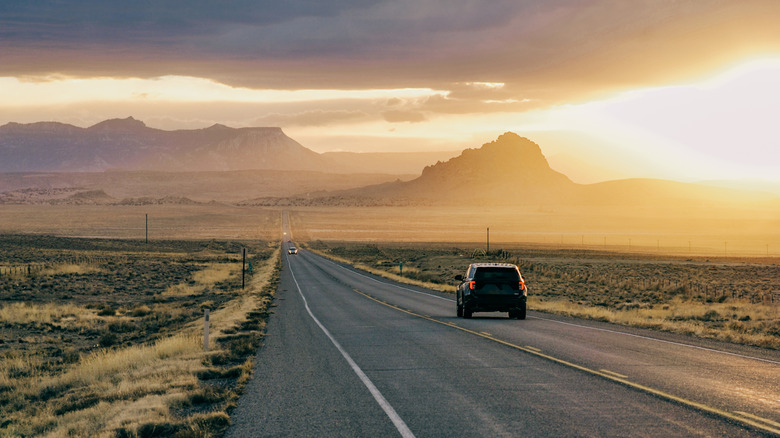Practical Tips To Avoid Getting Valley Fever On Your Trip Through The Southwestern US
The last thing you want on a road trip around the top tourist attractions in the southwest is to get sick. So, if you're planning a drive or hike through the dry landscapes of Arizona, California, New Mexico, or neighboring deserts, you should be aware of Valley Fever and its symptoms.
Valley Fever, aka Coccidioidomycosis, is caused by inhaling spores of the Coccidioides fungus, which can get stirred up into the air by wind, vehicles, and even foot traffic. Most people who are exposed won't even know it; however, if it makes you sick, you'll start seeing symptoms like fatigue, fever, and coughing within one to three weeks from exposure. Other symptoms include headache, muscle and joint aches, night sweats, shortness of breath, and a rash.
For most healthy travelers, these symptoms are often mistaken for a typical respiratory bug, and the illness resolves on its own. But in some cases, antifungal treatment may be needed to recover. Some groups are more at risk, including the elderly, pregnant women, Black and Filipino individuals, diabetics, and the immunocompromised. In rare cases — about five to 10%, according to the National Park Service — people who contract Valley Fever could end up experiencing more serious or long-term health issues. While there's no vaccine currently available, there are steps you can take to reduce the risk, like avoiding activities that stir up dust and soil.
Tips for lowering your risk of getting Valley Fever
The Coccidioides fungus primarily lives in dusty soil in drier areas of the US, Mexico, and Central America — but a few areas of Washington State have seen cases as well. So, if you're planning to hike Washington's most enchanting trails, it may be worth taking some of the same precautions.
To lower your chances of breathing in spores, stay inside when it's windy or dusty outdoors. Keep car windows closed while driving through affected areas, and set the air to recirculate if possible. Avoid areas that stir up the earth, like construction sites. If dust is unavoidable (for example, at trailheads or during guided hikes), wearing a properly fitted N95 respirator offers reliable protection. Other tricks to suppress dust and avoid exposure include wetting the ground before disturbing the soil, and staying upwind to reduce your chances of breathing in spores.
Believe it or not, animals can also contract Valley Fever — although they can't spread it to humans. So, whether you're taking your cat camping or hitting the trails with your dog, keep an eye out for any symptoms of illness, such as respiratory issues, weight loss, and lethargy. Finally, if you have symptoms like coughing, fatigue, or fever for more than a week after your trip, mention Valley Fever to your doctor — early testing helps avoid misdiagnosis. Experts also advise reporting confirmed cases to the NPS Office of Public Health.

